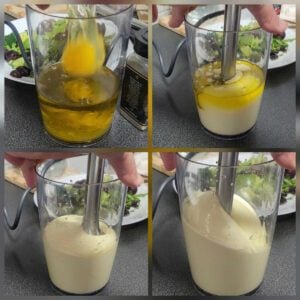Have you ever looked at a store-bought mayo jar and thought, “Wait, what are all these ingredients?” That was me, and it’s what got me started on making mayo at home. Once I learned how simple it was—and how much better it tasted—I never looked back. It’s rich, creamy, and takes just 5 minutes and a few pantry staples. Now I whip up a fresh batch whenever I need it, and I love being able to customize the flavor exactly how I want.
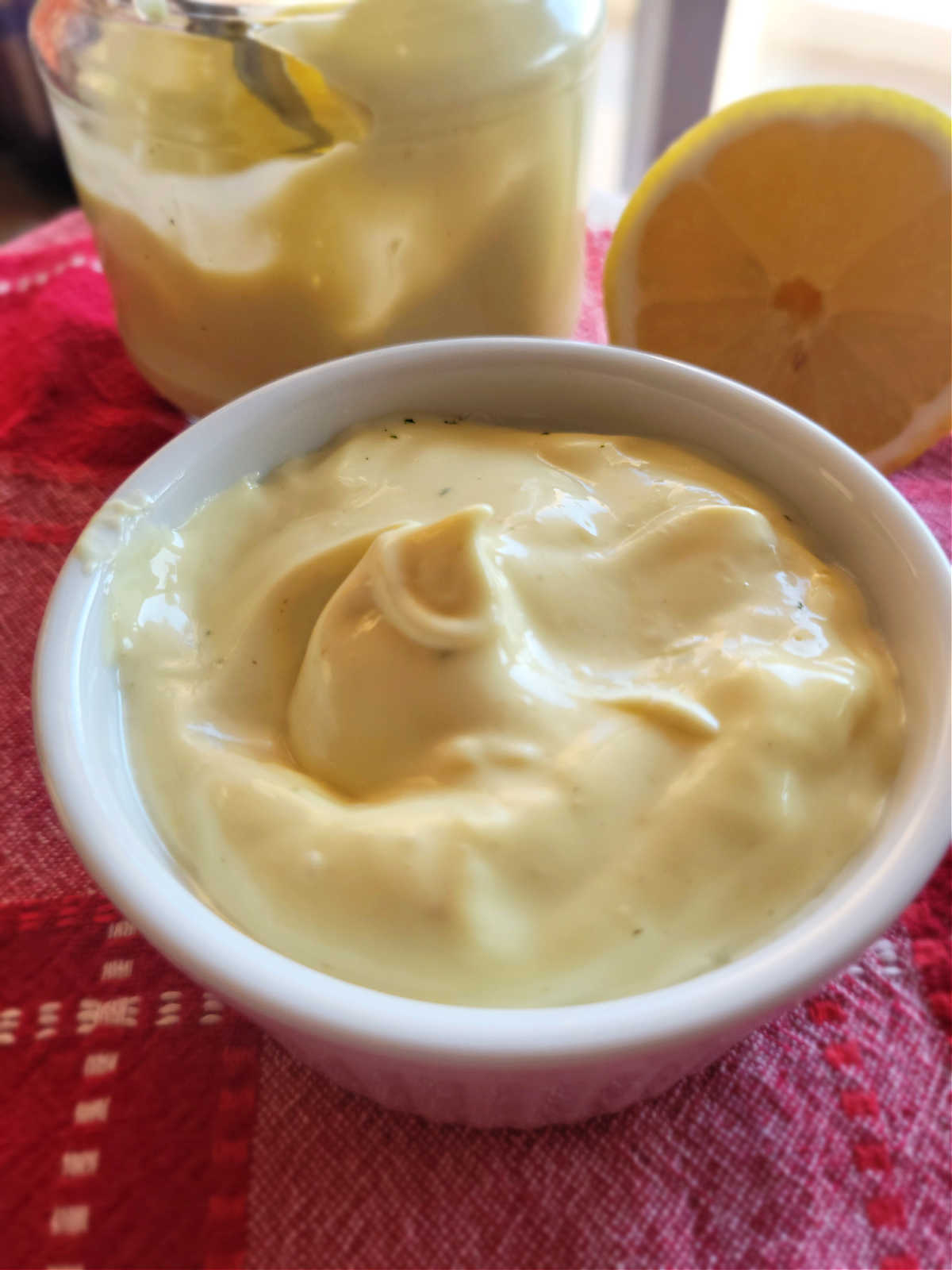
Want to save this recipe?
Enter your email & I’ll send it to your inbox. Plus, get great new recipes from me every week!
💡 Why Make Mayonnaise at Home?
Homemade mayo might sound fancy, but it’s actually super easy—and totally worth it. Here’s why I love it:
- You control the ingredients. No hidden sugars, preservatives, or seed oils.
- The flavor is incredible. Fresh, tangy, and smooth. It honestly makes everything taste better.
- It fits any lifestyle. Keto, paleo, Whole30, or just real food.
- It’s way cheaper than high-quality mayo from the store.
📝 Ingredients You’ll Need
You probably have everything you need already:
- 1 large egg (room temp for best results)
- 1 cup neutral oil (like avocado, light olive oil, or sunflower)
- 1 tablespoon lemon juice or apple cider vinegar
- 1 teaspoon Dijon mustard
- ¼ teaspoon salt
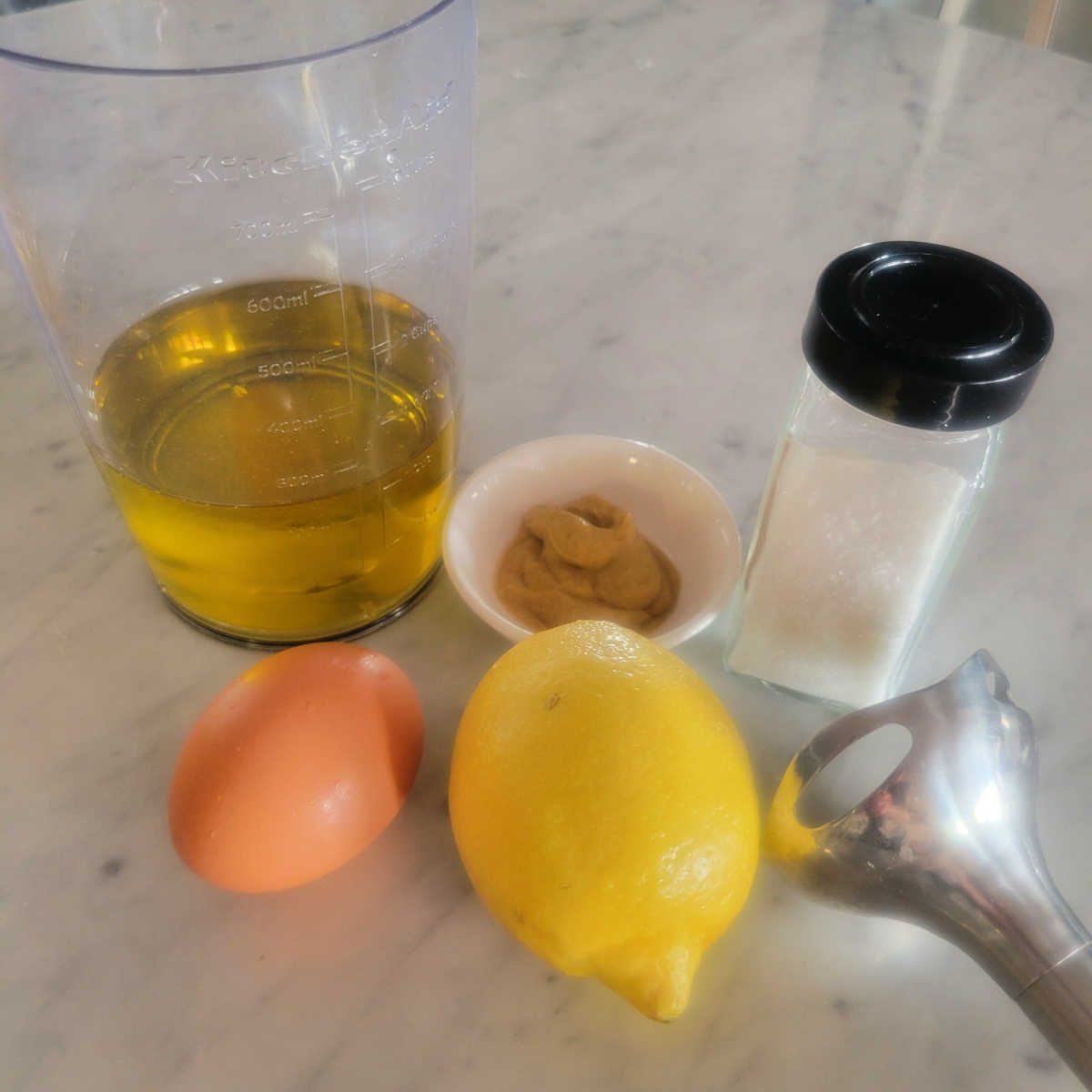
🔧 Tools You’ll Need
- Immersion blender (or regular blender)
- Tall jar that fits the blender snugly
- Measuring spoons and cups
👩🍳 Homemade Mayonnaise Recipe – Step by Step
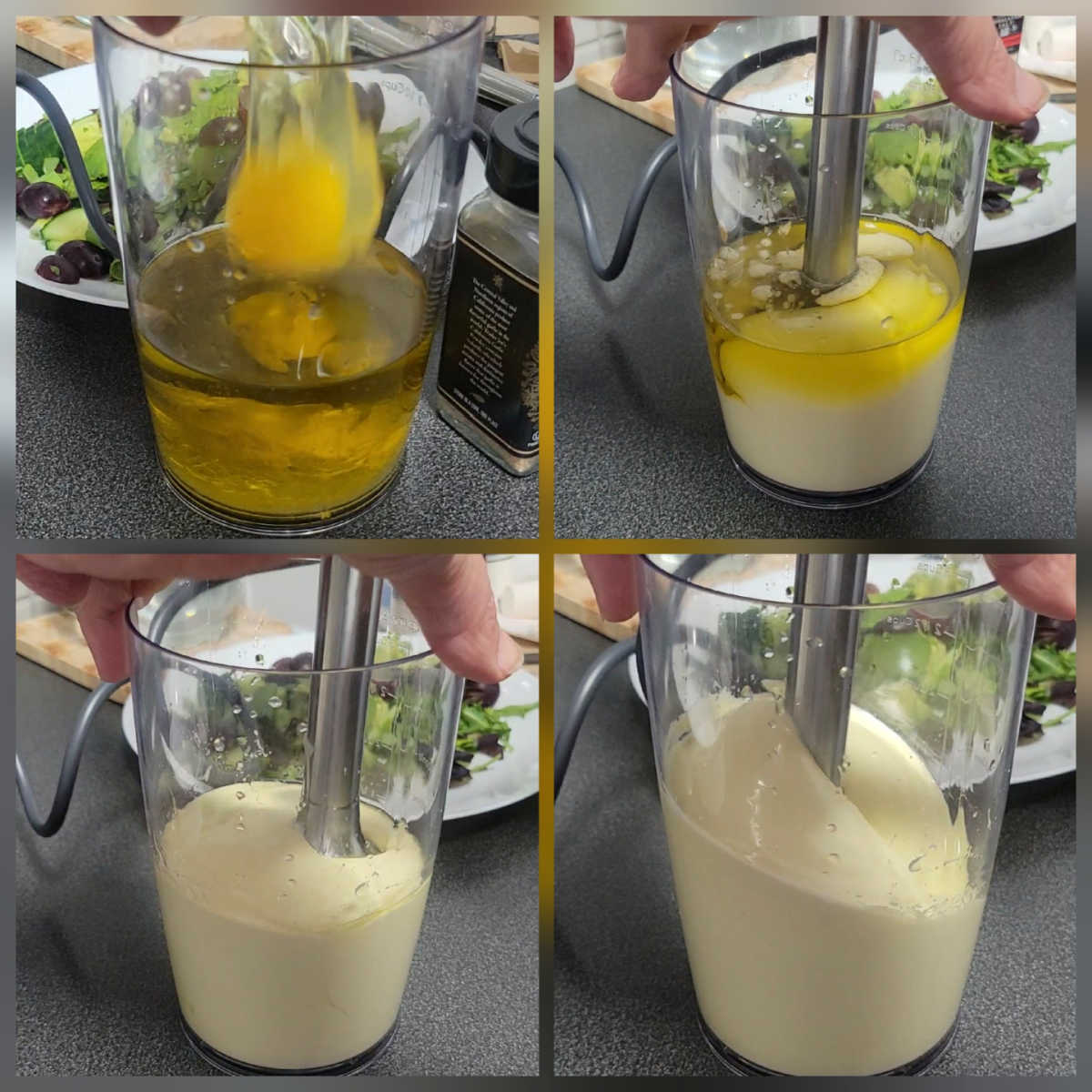
- Add the egg, mustard, lemon juice (or vinegar), and salt to the bottom of the jar.
- Pour in the oil on top.
- Place the immersion blender all the way to the bottom of the jar.
- Turn it on and don’t move it for about 10 seconds. You’ll see mayo forming!
- Slowly raise the blender to finish mixing.
- Blend for about 40-50 seconds. Boom—perfect mayo in under a minute.
✅ Tips for Perfect Homemade Mayo Every Time
- Use Room temperature ingredients work best.
- Use light oils – extra virgin olive oil can overpower. (see FAQ’s below)
- Taste test before storing—adjust lemon, mustard, or salt if needed.
🎨 Fun Flavor Variations
Want to jazz things up? Here are my favorite add-ins:
- Garlic Mayo (Aioli) – 1 minced clove
- Chipotle Mayo – 1 tsp adobo sauce or chipotle powder. Here’s 5 minute Chipotle Mayo Sauce recipe.
- Herb Mayo – Parsley, chives, or dill
- Lemon-Pepper – Add zest and cracked pepper
📦 How to Store Homemade Mayo
- Store in an airtight jar in the fridge
- Lasts 7 to 10 days
- I label mine with the date I made it
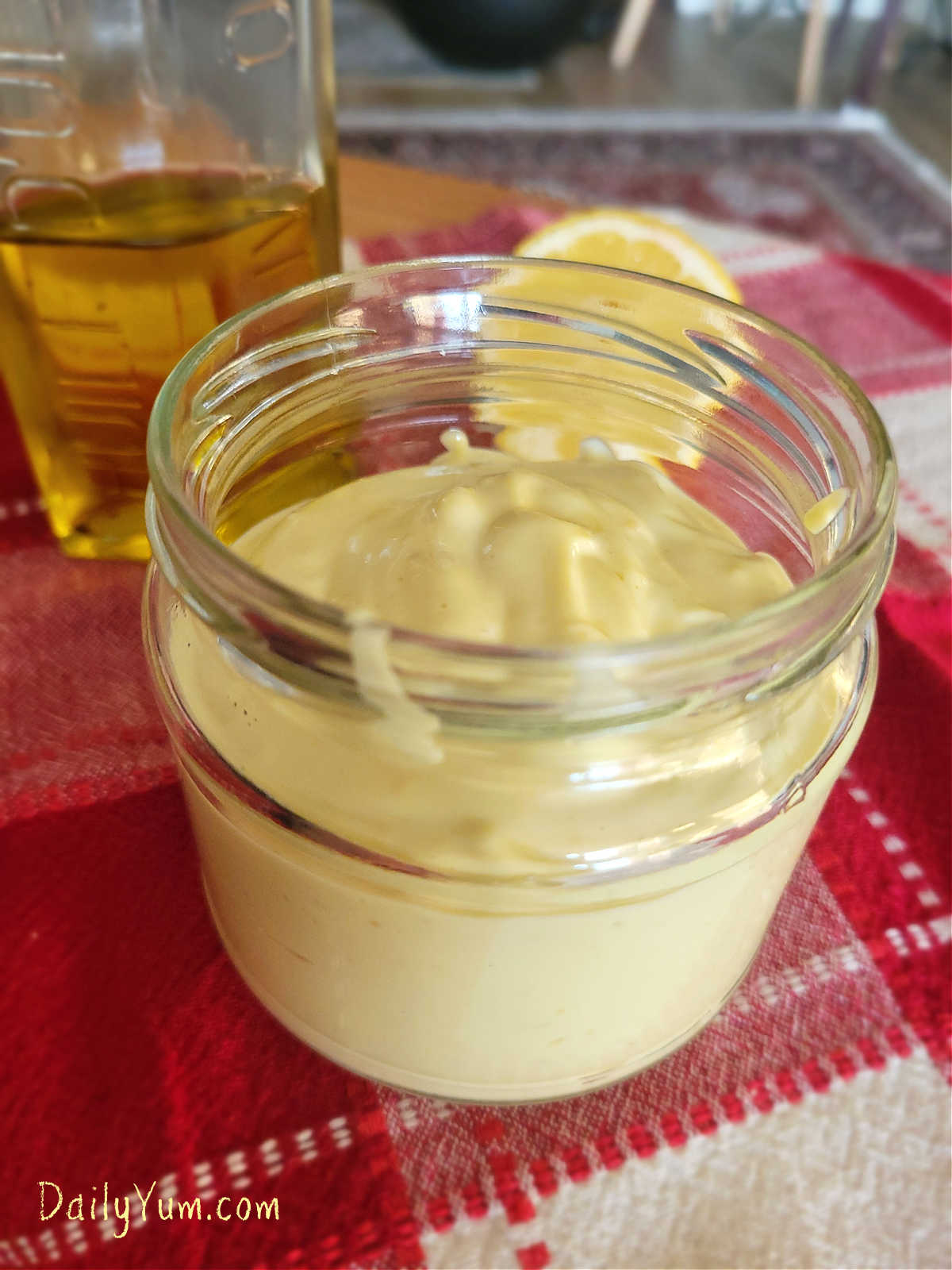
🍽 Try It With These Recipes
Now that you’ve made mayo, here’s how to enjoy it:
- Air Fryer Panko Chicken – Mayo as a base for breadcrumbs
- Zesty Coleslaw – Just cabbage, vinegar, and this mayo
- Egg Salad or Tuna Salad – So fresh and tangy
- Dips – Just add herbs or hot sauce
What oils can I use to make homemade mayonnaise?
You can use a variety of neutral or mild-tasting oils to make homemade mayonnaise:
- Light tasting olive oil – This is not the same as extra virgin olive oil. Light olive oil refers to its mild flavor, not fewer calories. It’s refined to reduce the strong taste, making it ideal for mayo.
- Avocado oil – A healthy option with a neutral, buttery flavor.
- Grapeseed oil – Light and clean-tasting, perfect for smooth mayo.
- Canola or vegetable oil – These are classic choices for neutral flavor and smooth texture.
- Sunflower oil – Another neutral option that blends well.
Are these oils toxic?
This topic has sparked significant debate online lately. Some claim certain seed oils may have negative health effects when consumed in large amounts, while others argue they are safe in moderation and backed by research.
✨ My take? I personally use light tasting olive oil or avocado oil because I like the flavor and simplicity. But I encourage you to do your own research and decide what feels right for you and your lifestyle.
Tip: Avoid using extra virgin olive oil or toasted sesame oil, as their strong flavors can overpower the mayo.
❓ Frequently Asked Questions
1. Can I use extra virgin olive oil?
You can, but it has a strong flavor that might overpower the mayo. For a milder taste, use light-tasting olive oil or avocado oil.
2. Is raw egg safe to use?
If you’re concerned, use organic pasteurized eggs. Always store the mayo in the fridge and use within 5–10 days to minimize any risk.
3. Can I make it with cooked egg?
If you’re not comfortable using raw eggs in your homemade mayo, you can try using a soft-boiled or lightly cooked egg instead. I gave it a shot and it blended just fine—the texture was smooth and creamy, just like the raw version. That said, I did notice the flavor leaned more “eggy” than I liked, so keep that in mind depending on your taste preferences!.
4. Can I make it without mustard?
Yes! While Dijon mustard helps with emulsifying and adds flavor, you can skip it or replace it with a pinch of dry mustard or a splash of vinegar.
5. How long does homemade mayo last?
Stored in an airtight container in the fridge, it’s good for up to 7 – 10 days. Be sure to label it with the date you made it!
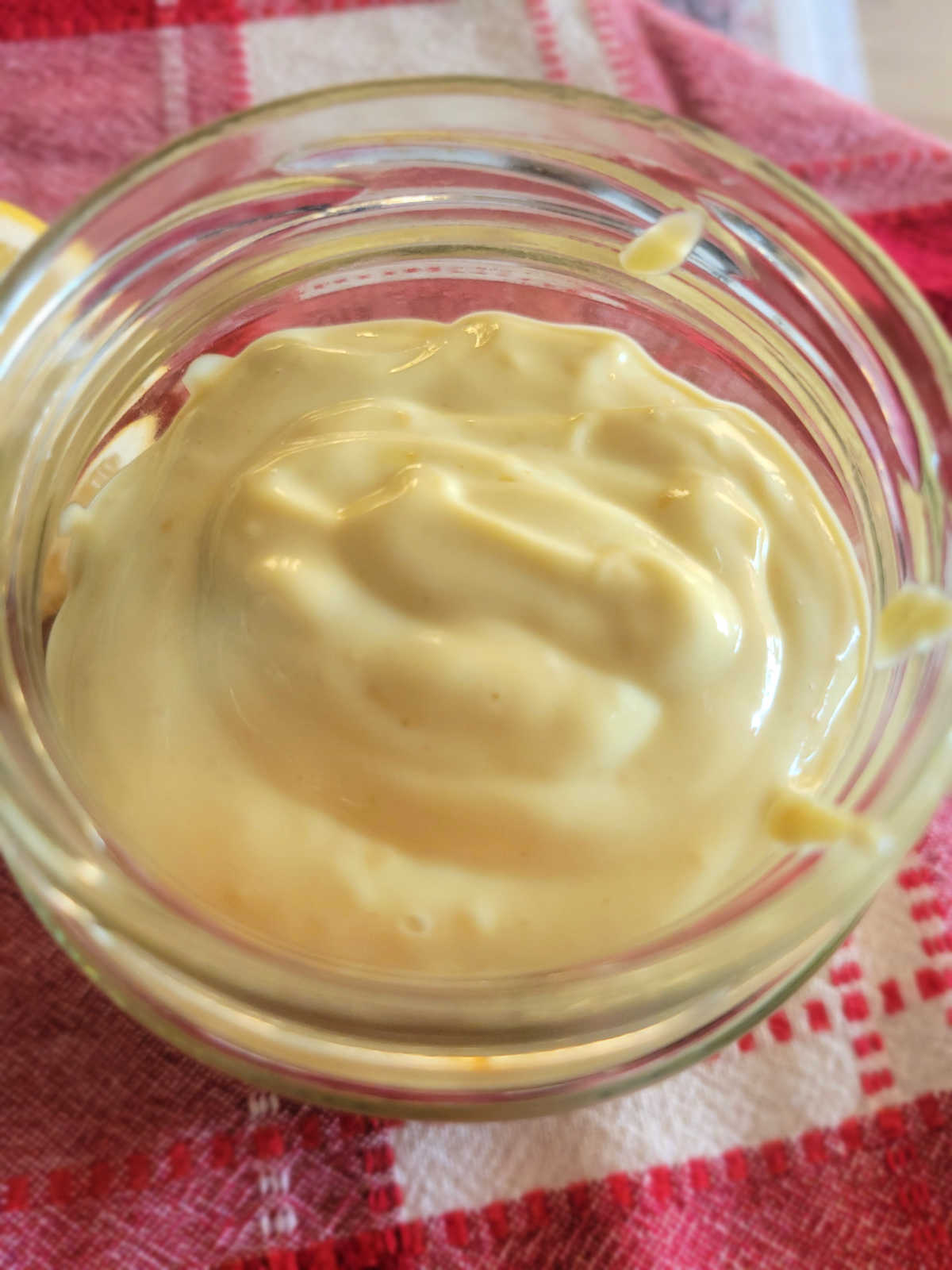
Want to save this recipe?
Enter your email & I’ll send it to your inbox. Plus, get great new recipes from me every week!
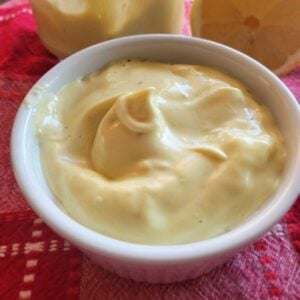
Super Easy Homemade Mayo Recipe
Ingredients
- 1 Large egg Room temperature
- 1 tablespoon lemon juice or white vinegar.
- 2 teaspoons Dijon mustard You can use yellow mustard, spicy brown mustard as a substitute. Or mustard powder can be used instead of Dijon mustard—just use about 1/2 teaspoon and mix it with a small splash of water or lemon juice to help it blend smoothly.
- 1/4 teaspoon salt adjust to taste
- 1 cup olive oil or avocado oil about 230 ml
Optional
- Pinch of garlic powder or a splash of water to thin, if needed.
Instructions
Directions:
- Add ingredients to a tall jar or container: egg, lemon juice, Dijon mustard, salt, and oil (in that order).
- Place immersion blender at the bottom of the jar and turn it on without moving it.

- Watch as the mixture begins to emulsify. Once the bottom thickens, slowly lift the blender upward to incorporate the oil.
- Blend until smooth and creamy—about 30 seconds to 1 minute total.
- Taste and adjust seasoning if needed. Store in the fridge for up to 7-10 days in an airtight container.
Notes
- Mustard Options: Dijon mustard adds a smooth tang, but you can substitute with yellow mustard or 1/4 tsp mustard powder mixed with a splash of water.
- Egg Temperature: Use a room temperature egg for best emulsification. If you’re worried about raw eggs, you can try using a pasteurized or soft-boiled egg—though it may taste more “eggy.”
- Oil Choices: Light-tasting olive oil, avocado oil, or sunflower oil work best. Avoid extra virgin olive oil as it can make the mayo bitter.
- Storage Tip: Store in an airtight jar in the fridge for up to 7-10 days.
- Blending Tip: Make sure to place the immersion blender at the bottom of the jar before turning it on. Hold it still for the first few seconds, then slowly move it up as the mayo thickens.

